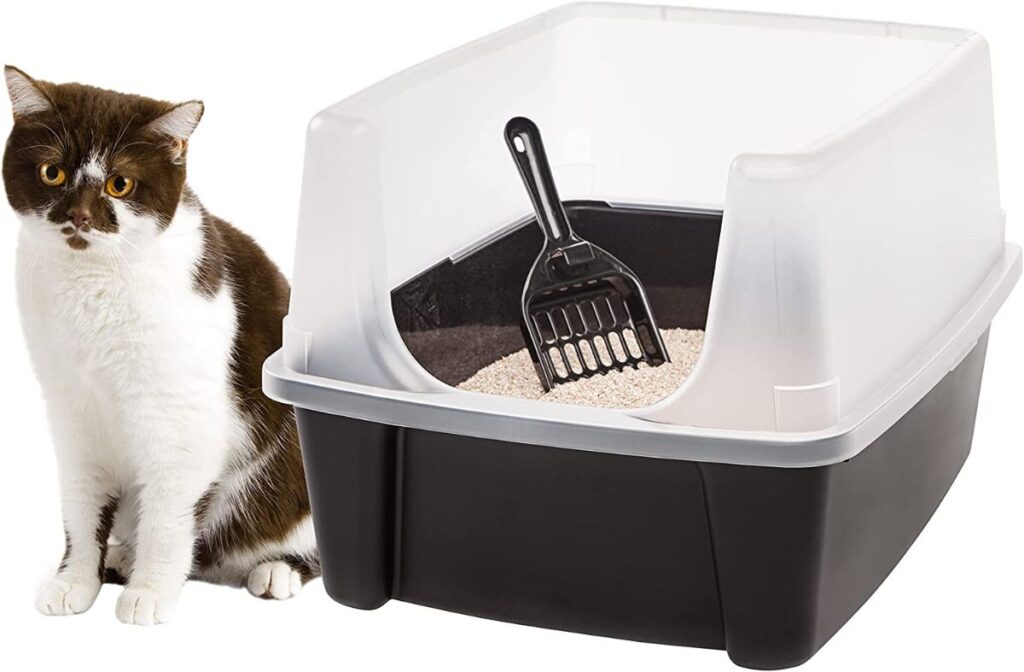What Is The Best Litter Box For Multiple Cats

Multiple cat households face a unique challenge: litter box management. Choosing the right setup is crucial for feline health and household harmony.
Selecting the ideal litter box strategy for multiple cats demands careful consideration of size, type, location, and cleaning frequency. Overlooking these factors can lead to behavioral issues and potential health problems.
The Golden Rule: Number of Boxes
The generally accepted rule is one litter box per cat, plus one extra. This means a two-cat household needs three boxes.
This minimizes competition and ensures each cat has a clean and accessible option. Inadequate litter box access can lead to inappropriate elimination and stress-related issues.
Litter Box Types: A Breakdown
Several litter box types cater to different needs and preferences. Understanding their pros and cons is essential for informed decision-making.
Standard Open Litter Boxes
These are the most basic and affordable option. They offer good ventilation and allow cats to easily see their surroundings.
However, they can be messy, scattering litter and emitting odors. Consider a high-sided option to minimize litter scatter.
Covered Litter Boxes
Covered boxes offer increased privacy and help contain odors and litter. They can be a good choice for cats who prefer seclusion.
Some cats may feel trapped or claustrophobic in covered boxes. Ensure the box is large enough and well-ventilated.
Self-Cleaning Litter Boxes
These automated boxes rake and dispose of waste regularly. They significantly reduce manual scooping effort.
They can be expensive and noisy, which may scare some cats. Always monitor the cat's reaction to the mechanism.
Top-Entry Litter Boxes
These boxes require cats to jump inside from the top. They are excellent for containing litter and preventing dogs from accessing the waste.
Not suitable for older cats or those with mobility issues. Ensure the opening is large enough for comfortable entry and exit.
Litter Type: Finding the Right Fit
Cats are particular about litter texture and scent. Experimenting to find a preferred litter is crucial.
Clumping clay litter is a popular choice for its ease of cleaning. Non-clumping litter requires more frequent changes.
Avoid scented litters, as they can be off-putting to cats. Opt for unscented, low-dust options to minimize respiratory irritation.
Location, Location, Location
Strategic placement of litter boxes is essential for multiple cat households. Boxes should be in accessible, low-traffic areas.
Avoid placing boxes near food and water dishes. Cats prefer to eliminate away from where they eat and drink.
Spread the boxes throughout the house to prevent territorial guarding. This gives each cat equal access to a clean bathroom space.
Scooping Schedule: Consistency is Key
Regular scooping is non-negotiable in multiple cat households. Scoop at least once, ideally twice, daily.
This prevents odor buildup and encourages cats to use the boxes. A dirty litter box is a major deterrent for cats.
Completely empty and clean the boxes monthly, using a mild detergent. Avoid harsh chemicals that could irritate your cats.
Addressing Potential Issues
If one cat is consistently eliminating outside the box, consult a veterinarian. Medical issues can often cause inappropriate elimination.
Behavioral problems, such as stress or anxiety, may also be a factor. Consider using feline pheromone diffusers to create a calming environment.
Consulting with a veterinary behaviorist can help address complex behavioral issues. They can provide tailored solutions for your cats.
Expert Opinions and Data
According to Dr. Lisa A. Pierson, DVM, a feline nutrition expert, "Providing enough litter boxes and keeping them clean is critical for preventing litter box aversion and promoting feline well-being."
A study published in the Journal of Veterinary Behavior found that cats are more likely to use a litter box that is large, uncovered, and unscented. This highlights the importance of considering feline preferences when selecting a litter box.
The American Association of Feline Practitioners (AAFP) recommends providing multiple resources, including litter boxes, in multi-cat households to minimize competition and stress.
Conclusion: Ongoing Monitoring and Adjustment
Finding the perfect litter box setup for multiple cats requires ongoing observation and adjustment. Pay close attention to your cats' behavior and preferences.
Be prepared to experiment with different types, litters, and locations. Consult with your veterinarian or a feline behaviorist for personalized guidance.
Prioritizing your cats' needs will ensure a happy and healthy multiple cat household.
:strip_icc()/SPRPETS-Petmate-Booda-Dome-Cleanstep-Litter-Box-Titanium-Maddy-Newton-Brooke-Kane-photo-01-5b4b6b5ebb414cd7838617e781a593e0.jpg)
:max_bytes(150000):strip_icc()/sps-litter-boxes-apr-24-test-neakasa-m1-open-top-self-cleaning-cat-jennifer-joanning-20-ebc9f551917d4bd6ab9c503ec72c1c82.jpeg)
:max_bytes(150000):strip_icc()/81o4QzUoViL._AC_SL1500_-b74a2d4e7f734e1c8db631fe17eafe86.jpg)
:max_bytes(150000):strip_icc()/SPRPETS-Frisco-High-Sided-Litter-Box-Lindsay-Boyers-01-e8a92cf9334845bbae633294e4e8d85d.jpeg)


:max_bytes(150000):strip_icc()/sps-litter-boxes-apr-24-test-neakasa-m1-open-top-self-cleaning-cat-jennifer-joanning-34-7f45db74ec964fb9afb13b70d57c6fcd.jpeg)
:max_bytes(150000):strip_icc()/sps-litter-boxes-apr-24-test-neakasa-m1-open-top-self-cleaning-cat-jennifer-joanning-28-b1acae05c3134bee936e563d0203e191.jpeg)
:strip_icc()/SPRPETS-CatIt-Hooded-Cat-Pan-Warm-Gray-Maddy-Newton-Brooke-Kane-photo-11-5d6fd29152d2416e9e404dff3f9976e8.jpg)
:max_bytes(150000):strip_icc()/SPRPETS-Pretty_Litter_Non-Clumping_Alicia_Long3-93f33639e55c40a79ac6e1c643c36a1f.jpg)
:strip_icc()/SPRPETS-ModKat-Litter-Box-XL-White-Maddy-Newton-Brooke-Kane-photo-14-d875433b6e5e44cbb090e7e011f53b81.jpeg)
:max_bytes(150000):strip_icc()/PEO-Tuft-and-Paw-Cove-Litter-Box-Lindsay-Boyers-02-a3c68eeb47254a0b849560cf11260c4b.jpg)


:strip_icc()/Purina-Tidy-Cats-Breeze-XL-Litter-System-e53f3710114046d99c08af525176c808.jpg)
:max_bytes(150000):strip_icc()/Kittylitterfrisco-afef05f33e08457893e20afc297d8d3d.jpeg)

:max_bytes(150000):strip_icc()/friscoopen-f57c4542d519411bbd0de494103569e9.jpeg)
